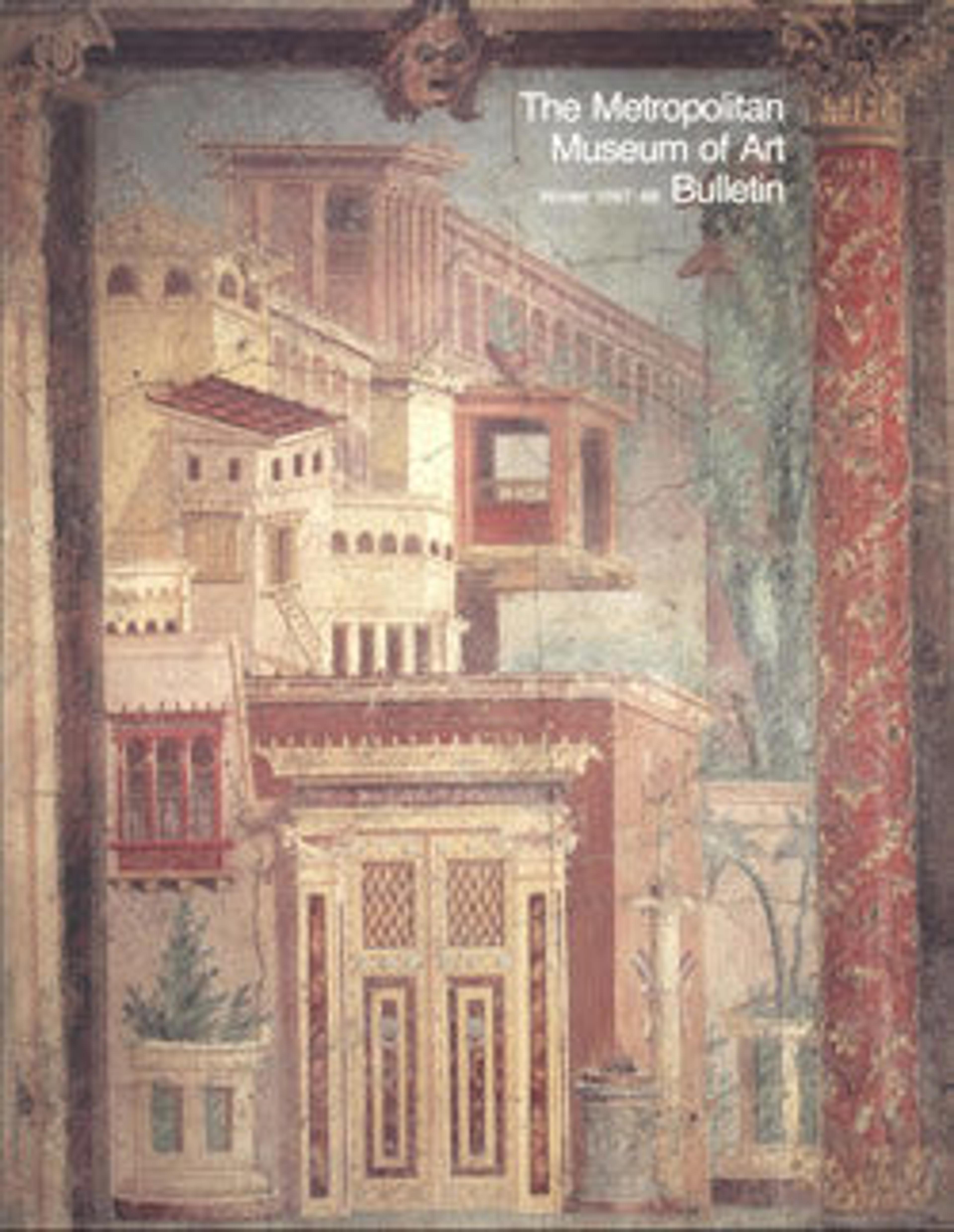Wall painting on red ground: candelabrum, from the imperial villa at Boscotrecase
This panel depicts a slender candelabrum, decorated with winged sirens, and is typical of the so-called Third Pompeian style of Roman wall painting. It comes from one of four bedrooms excavated near the modern town of Boscotrecase between 1903 and 1905 at the site of a luxury villa overlooking the Bay of Naples. The villa was probably built by Marcus Agrippa, close friend and son-in-law of the emperor Augustus, but the frescoes date to the period immediately after Agrippa's death in 12 B.C. when the villa was extensively and lavishly refurbished. The frescoes have been preserved because the villa was buried by the eruption of Mt. Vesuvius in A.D. 79.
Artwork Details
- Title:Wall painting on red ground: candelabrum, from the imperial villa at Boscotrecase
- Period:Early Imperial, Augustan
- Date:last decade of the 1st century BCE
- Culture:Roman, Pompeian
- Medium:Fresco
- Dimensions:Overall: 72 x 21in. (182.9 x 53.3cm)
- Classification:Miscellaneous-Paintings
- Credit Line:Rogers Fund, 1920
- Object Number:20.192.12
- Curatorial Department: Greek and Roman Art
More Artwork
Research Resources
The Met provides unparalleled resources for research and welcomes an international community of students and scholars. The Met's Open Access API is where creators and researchers can connect to the The Met collection. Open Access data and public domain images are available for unrestricted commercial and noncommercial use without permission or fee.
To request images under copyright and other restrictions, please use this Image Request form.
Feedback
We continue to research and examine historical and cultural context for objects in The Met collection. If you have comments or questions about this object record, please contact us using the form below. The Museum looks forward to receiving your comments.
